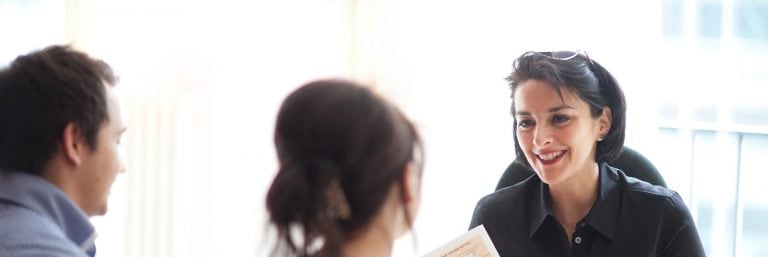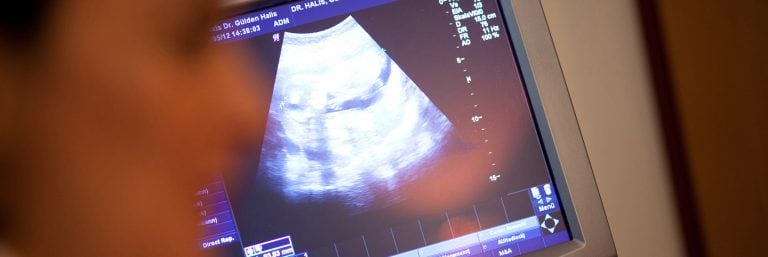Oocyte retrieval methods
In the natural cycle, only one egg follicle grows. Hormonal stimulation is required to obtain several eggs at the same time. By administering hormone preparations over several days, the growth of 10-15 follicles is usually achieved.
However, this stimulation is not completely risk-free for the woman. Considering that the treatment is not done for a medical reason, but to create a safety reserve of eggs, it is not acceptable to take risks. On the other hand, it is desirable to obtain a good number of eggs in as few treatment cycles as possible.
Our task as doctors is to agree with you on the best procedure for you. We want to be able to retrieve a sufficient number of mature eggs in as few treatment cycles as possible to keep your effort and costs acceptable.
Stimulation of oocyte growth
To achieve a good chance of pregnancy at the desired time of gestation, the recommended rule of thumb is to freeze the number of eggs that corresponds to the woman’s age at the time of freezing: i.e. 25 eggs for a 25-year-old woman, 30 eggs for a 30-year-old woman, etc. To protect the woman from an overstimulation cycle, you will not want to stimulate more than 15 follicles per cycle. This means that usually about 2-3 cycles are necessary to obtain the recommended number of eggs.
There are different stimulation protocols for IVF therapy. One of these protocols, which is known for its good controllability and lower risk of overstimulation, is the so-called antagonist protocol.
Despite careful procedures, it is not possible to predict with certainty how many eggs can actually be retrieved, nor how many of them will actually mature. Only cryopreservation of mature oocytes can be expected to lead to fertilization at a later stage.
“Mini-IVF” stimulation – “IVF-naturell” – as a special form of stimulation
In so-called mini-IVF, stimulation is carried out with only a very small amount of hormones. In the case of IVF-Naturell, there may even be no hormonal stimulation at all. Consequently, there is only a small increase in the female hormone oestrogen. This protocol can be used especially after a hormone-sensitive cancer.
The disadvantage of these protocols is the low “yield” of oocytes, as often only 1-2 oocytes grow, which means that many more cycles are necessary. The medication costs are of course much lower with these protocols and overstimulation is practically impossible. Mini-IVF or IVF-Naturell are rather unsuitable for social freezing.
Despite the use of the term “mini-IVF” and “conventional IVF”, however, it should be explicitly emphasized here that this is only about egg retrieval, not complete IVF, in which fertilization does take place. With “social freezing”, however, unfertilized eggs can also be cryopreserved.
Freezing fertilized or unfertilized eggs?
When unfertilized eggs are preserved, the cells are thawed (individually or in groups, depending on the case) when the pregnancy is to occur and fertilized with the partner’s sperm.
Sometimes, however, couples wish to postpone the onset of pregnancy until the future. Then the cells can be fertilized first. The advantage is that these fertilized cells are more “stable” and survive thawing at a higher rate.
If fertilized eggs – so-called pronuclei (pro-nuclei) are preserved, they can only be used for a pregnancy if both partners explicitly agree to treatment at the time. In the event of a separation, the woman can then no longer use her egg reserve.
Freezing (cryopreservation by vitrification)
In contrast to “slow freezing” (SF), in which the cells are cooled down to -196 degrees Celsius within approx. 30 minutes, vitrification (V) is referred to as “ultra rapid freezing”. In vitrification, a process lasting only a few seconds, in which an antifreeze is added and all water is removed from the cells, ensures that the potentially cell-damaging formation of ice crystals is avoided. Months or years later, after the cells have thawed, the first thing to do is to remove the potentially cell-toxic antifreeze. This prevents damage to the cells. At present, there are no indications of an increase in the rate of malformation in the child. In contrast to “slow freezing”, the so-called “survival rate”, i.e. the percentage of cells that survive freezing and thawing undamaged, is significantly higher. With slow freezing, a survival rate of 60-65% is common, with vitrification 95%. Cells can even be repeatedly frozen and thawed.
Risks
Stimulation with clomiphene and low-dose so-called gonadotropins carries only minor risks, a certain “feeling of fullness” is to be expected, overstimulation rarely occurs, but then is only of short duration (a few days). Since the ovaries are stimulated more strongly with “conventional IVF stimulation”, the risk of overstimulation is somewhat higher here. A feeling of “fullness” is to be expected in approx. 10-20%, which will disappear after a few days. However, in 2-4% of women (especially those under 30), a higher degree of overstimulation can occur. In this case, the ovaries may enlarge up to 5-8 cm in diameter, which can lead to increased abdominal pressure. The increased oestrogen production caused by the ovaries can lead to ascites (free fluid in the abdomen) due to an increase in the permeability of the blood vessel walls, which can lead to a more or less severe restriction of physical well-being. In very rare cases, the fluid shift can lead to thickening of the blood, which theoretically can also cause thrombosis.
For some years now, the final maturation of the eggs has been induced with a so-called GnRH analogue. With this preparation, an overstimulation syndrome is almost impossible. (See OHSS free clinic, PDF)
Despite the fact that the procedure is carried out according to modern medical standards, it cannot be guaranteed that all the expected eggs can be retrieved (premature ovulation, empty follicles). Nor can it be guaranteed that all the eggs expected/obtained will also be mature and thus suitable for freezing.
Costs for fertility preservation for personal reasons (so-called social freezing)
In accordance with the guidelines of the German Social Code, measures for the cryopreservation of oocytes are not part of the scope of services provided by the statutory health insurance funds. The same applies in principle to patients with private health insurance. Therefore, it must also be assumed that the costs of the subsequent artificial insemination are not borne by the health insurance fund.
The costs incurred are made up of the following items:
| Stimulant medication through a pharmacy | ca. 1000 € |
| Ultrasound Laboratory services Oocyte collection | ca. 900 € |
| Vitrification and storage for the first 6 months | 650 € + VAT |
| each additional 6 months storage | 150 € + VAT |



